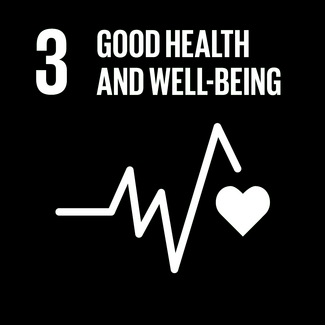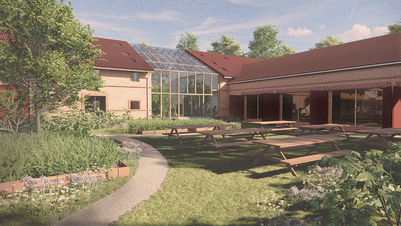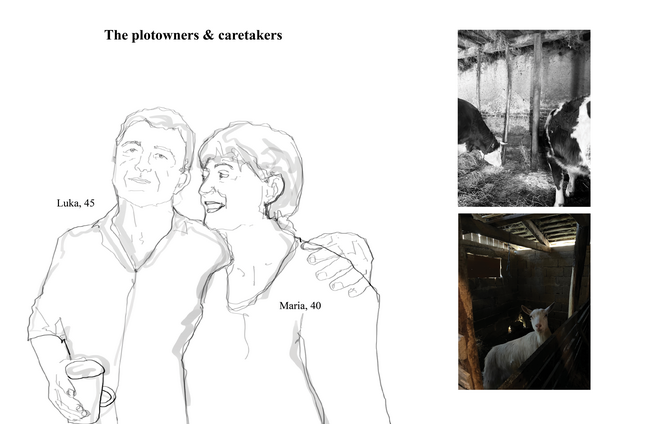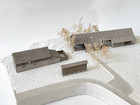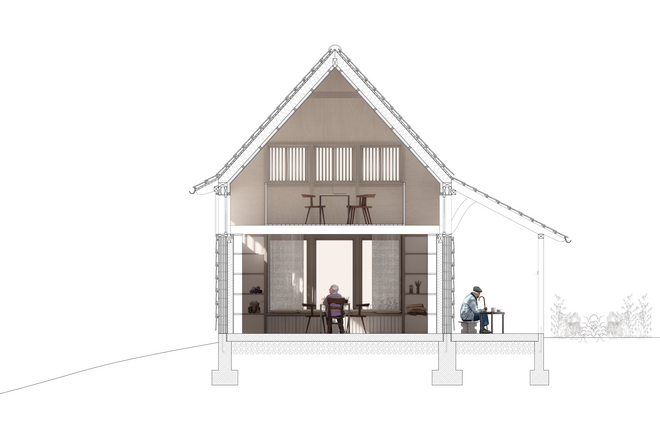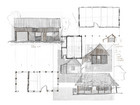

A familiar place for the elderly in Bosnia & Hercegovina: in loving memory of our past
On top of poverty post-war, Bosnia & Herzegovina is facing the aging population epidemic, and elderly care is currently a huge concern there. As a response to this, a place where the elderly can come during the day to receive support and stimulation through companionship and community will be developed in a village called Božići.
The aim is to develop a new but familiar building that acts as support for the elderly who live at home nearby the village and their relatives who need relief. The building emphasizes the destroyed vernacular architecture and lifestyle that is familiar to the elderly, in loving memory of their past.
Something appreciative about the people in Bosnia is their unselfish, helpful, and generous nature where taking care of their elderly within the family-structure has been a matter of course. Elderly care in the same sense as in Scandinivia has not been integrated into the political system. But post-war conditions, combined with an aging population epidemic, have changed this.
Although retirement homes have been developed in Bosnia in recent years, there seems to be a long way to go to fully provide support and care for a wider range of elderly individuals and their relatives. Many elderly are perhaps capable and want to live at home but need part-time daily support. However, relatives are not always able to provide this support today, leaving them with no other option than moving into a retirement home or staying at home. This leaves many elderly individuals and their relatives vulnerable.
This project aims to answer to the contemporary needs of the elderly and their families by being a part of the modernization of the social protection system. The program is inspired by the Swedish concept of daycare for the elderly “dagverksamhet,”. It serves two main purposes: to stimulate the elderly (sense of meaningfulness) and to provide relief for the relatives.
Because the recovery of post-war is ongoing, a small-scale and local, quick impact project are more suitable for implementation, as it allow for the effective involvement of the local community and reduces the possibility of corruption. The point of departure is therefor developing a building that prioritize the elderlies direct spatial experiences and a project that adapts to the socio-economic situation in Bosnia.
Planting a seed of support for the elderly in one village, and being an example that could be applied in other villages and grow into a bigger support system.
The village of Božići is located northwest in the country, approximately a ten-minute drive from the small town of Kozarska Dubica, which is located on the River Una that forms the border with Croatia.
Božići is where my relatives live today, and it is a special place for me I have visited every year since I was young. It is not only special for me but also mirrors how the majority of people in Bosnia & Herzegovina live.
The village of Božići is easily accessible from the town via the “main” road, which also leads to the Mostanica Monastery. Although the center isn’t too far from Božići, the gravel road leading here, the hilly landscape, the trees, the silence; where all you can hear is the barking of dogs or the chickens, cows, and goats, makes it feel more distanced from the town than it is.
The site is easily accessible from the gravel road when users are coming. The placement allows for caretakers who lives in the existing house and have the barn to have their own zone while still being in good connection to the new building. The site is closely related to the animals and barn, which is reminiscent of the lifestyle of the past. Additionally, the flat ground makes it suitable for elderly individuals.


The building will accommodate approximately 8 elderly individuals aged 65+ who live at home nearby the village where the daycare is located. The intention is for them to come here during the day from around 8-16, either dropped off by their relatives or a minibus provided by the daycare. One to three caretakers will support those who need it, and the main caretaker/ owner lives at the existing plot.
The daycare center for the elderly is approximately 250 sqm and includes what would also include a regular home: kitchen, diningroom (togetherroom), livingroom (alone together) and a room for rest (alone), two toilets and a parking-lot. The second floor is for the administrative work of the caretakers.


As people age, they may experience a sense of loss or disconnection from their former roles and identities. In my prior studies I understood familiarity in spatial design was therefor critical. The spatial ramifications that come from the theme of "familiarity" is important because it recognizes the gap between the new environment and the one that the elderly are familiar with. Creating spatial design informed by the lived experiences of the elderly, their cultural background and the spatial qualities they are familiar with rather than responding to their disease or age has been important in my design decision. Building a new building from the traces of the past that can be found on-site and has a strong connection to the historical references, where the aim is to work with the surrounding environment and not against it. And where there is different rooms and atmospheres for different moods.



Det Kongelige Akademi understøtter FN’s verdensmål
Siden 2017 har Det Kongelige Akademi arbejdet med FN’s verdensmål. Det afspejler sig i forskning, undervisning og afgangsprojekter. Dette projekt har forholdt sig til følgende FN-mål

